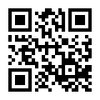文章基本信息
- 标题:スポーツ行動の予測因子としての行動意図・態度・信念に関する研究 (I) : ランニング実施に対するFishbeinの行動予測式の適用
- 作者:徳永 幹雄 ; 多々納 秀雄 ; 橋本 公雄 等
- 期刊名称:体育学研究
- 印刷版ISSN:0484-6710
- 电子版ISSN:1881-7718
- 出版年度:1980
- 卷号:25
- 期号:3
- 页码:179-190
- DOI:10.5432/jjpehss.KJ00003392719
- 语种:Japanese
- 出版社:Japan Society of Physical Education, Health and Sport Sciences
- 摘要:
The purpose of this study was to examine behavioral intention, attitudes and beliefs men joggers and nonexercisers have regarding regular jogging, and the relation of those variables to their jogging behavior. To facilitate this examination, an instrument adopted from Fishbein's Behavioral Intention Model was developed and tested. The first hypothesis stated that joggers and nonexercisers 20 years of age and older had different attitudes, beliefs and behavioral intentions about regular jogging. The second stated that Fishbein's Model could be used to predict people's jogging behavior. A total of 204 males completed and mailed back usable questionnaires. Subjects were called back two weeks after completing the questionnaire and asked if they had run regularly during the prior two weeks. Peason's product moment, point biserial and multiple correlation coefficients were calculated to determine the effects of components in Fishbein's Model. The results were summarised as follows: 1) Joggers and nonexercisers had significantly different behavioral intention, attitudes and beliefs about regular jogging. Especially, joggers responded positively and favorably on behavioral intention, attitude toward behavior, belief about consequences of behavior, and normative beliefs. 2) Fishbein's Model seemed to predict regular jogging behavior fairly well (1) The model's assumption that there is a high correlation between behavior and behavioral intention was substantiated, because its correlation was found to be .899. (2) The present findings were compatible with Fishbein's contention that behavioral intention could be predicted, from a linear combination of attitude toward behavior and subjective norm concerning behavior. However, normative beliefs predicted subjective norm more effectively than did the sum of the product of the normative beliefs times motivation to comply (Σnb_imc_i). (3) The attitudinal components played the most important role in determining jogging behavior and behavioral intention. But attitude toward behavior correlated better with behavior and behavioral intention than did attitude toward objects. (4) It was found that attitude toward behavior correlated highly with the sum of the product of beliefs about consequences times evaluations of consequences (Σb_ie_i). But attitude toward behavior correlated higher with beliefs about consequences than did Σb_ie_i. 3) As mentioned above, although Fishbein's Model have validity and feasibility concerning sport behavior, a proposed modification may improve its model further.
